|
Happy Down Syndrome Awareness Month, Day 20! We are celebrating by posting information about Down syndrome each day in October, during the 31 for 21 challenge. Feel free to share these posts to help spread awareness and acceptance. About a year ago, our President Deb, was approached to see if the Nebraska Down Syndrome Community would be interested in working together to pass legislation that would require medical professionals who deliver a new diagnosis of Down syndrome to provide accurate, up to date and non-biased information. A group was quickly formed, Senators were contacted, testimonies were given and the Down Syndrome Diagnosis and Support act was signed into law by Governor Ricketts this spring. The Nebraska Department of Health and Human Services launched a new webpage and printable PDF that Doctors can give to families on July 26, 2016. Why did this happen so quickly? Why did it even need to be made into a law? The answer is simple.... because families are still being given inaccurate information, They are being pressured to terminate their baby due to stereotypes and outdated information, With the new free cell DNA testing families are being misled to believe these test can tell if your baby has Down syndrome with 99% accuracy. Mark Leach, Father, Layer and Down syndrome Advocate recently posted an article that clearly explains why doctors who use this terminology are actually committing malpractice. Let's face it, receiving the information that your child has Down syndrome, is never an easy conversation for the doctor or the family. When bias and prejudice enter the mix, it makes things even worse. We highly encourage the medical professionals in Nebraska to utilize the new information resources available, keep bias out of the conversation, and do their best to help families as they learn about what it means to welcome a child who comes with a little something extra. Keep Advocating! #dsam16, #advocacymatters, #DSAANE 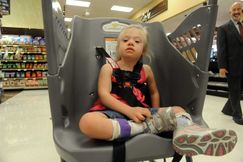 ,By Angie Willey Happy Down Syndrome Awareness Month, day 19! We are celebrating by posting information about Down syndrome each day in October, during the 31 for 21 challenge. Feel free to share these posts to help spread awareness and acceptance. I can't shop with my child! The question of how families, especially single parents, can go out and shop with their young child who has Down syndrome is one we hear quite often. Some children with Down syndrome tend to be runners, which can make going out and about in public and pulling your attention to anything but them for even a second, a scary situation. As the mother of an 8 year old boy with Down syndrome, I live this every time I go to the store. It was always so convenient to put him in the seat of the cart, until he started getting too big for it. Then we moved to the dual seat carts with shoulder straps…until he learned how to unsnap the harness. Eventually we realized that we need to teach him now to act in the store and let him practice every time we go. The day is quickly coming where he will no longer fit in a cart, and we need to be prepared. So we practice. Some trips are better than others. Occasionally he makes it around the entire store and never has to get in the cart. But other times he is in the cart (time out) before we hit the first aisle. But let’s face it. There are occasions where we need to make a quick trip in and out, and there is just not time for us to practice. Here in Nebraska we are lucky to have Caroline’s Carts available in a few stores. In Lincoln, they can be found at two HyVee’s, two Target stores, and Fresh Thyme Market. In Omaha they are available at even more stores. These carts are designed with a larger seat to help parents of children with disabilities shop confidently knowing that their children are safe. For a complete listing of all the stores in Nebraska that offer a Caroline’s Cart, click here. Have you tried using one of the Caroline’s Cart? If so let us know what your think! Ultimately we do want our kids to be able to walk with us in a store. Keep practicing, reward good behavior and keep advocating, and use the resources avaialabe to you for those times when you need it! 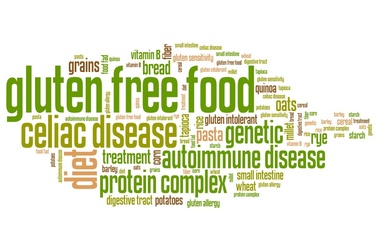 Happy Down Syndrome Awareness Month, day 18! We are celebrating by posting information about Down syndrome each day in October.during the 31 for 21 challenge. Feel free to share these posts to help spread awareness and acceptance. It is estimated that up to one third of individuals with Down syndrome also have celiac disease. The symptoms of Celiac disease can vary greatly and there are other gastrointestinal issues that are common in the Ds population which is why it often goes undiagnosed. Celiac disease happens when the body has an autoimmune response to gluten which can be found in wheat, rye, and barley. The body's response is to produce antibodies that flatten the villi in the small intestine which limits, its ability to absorb vitamins. Some of the more common symptoms to look for include bowel issues, lack of weight gain or growth, stomach pain, bloating, rash, irritability, and food avoidance. But there are also about 500 other possible symptoms which makes this disease an easy one to overlook. A simple blood test can tell if there are antibodies present and can indicate if additional testing is needed. Some doctors recommend that individuals with Down syndrome get the blood test for celiac disease every year with their annual testing. Other doctors feel that testing is only needed if there are symptoms present, or if the individual has a thyroid condition, which can increase the likelihood of an auto immune disorder. Once detected, the only cure for Celiac disease is to remove all gluten from your diet. This can often prove difficult as many foods contain trace amounts of gluten. For instance, potatoes are gluten-free, however when you cut them and fry them in the same oil as chicken nuggets or onion rings they become contaminated. It is important to read labels and understand cooking processes to know which ingredients contain gluten in some form and if they have come in contact with the food about to be consumed. Living a gluten-free lifestyle can be tricky for any individual. However, it can be much more difficult for individuals with Down syndrome, who don't necessarily realize or are able to remember all the different food items that can contain gluten. Let's face it we live in a gluten filled society. Cookies are handed out at supermarkets. Cake is it virtually every party thrown. Hotdogs, hamburgers and pizza have become a staple at many social events. It is one thing to avoid buying gluten, it is quite another to say no to that delicious cookie or cupcake being handed to you. It takes education. It takes practice. It takes power. We know that individuals with Down syndrome can and do accomplish great things every day. It's up to the rest of us to advocate for them and support them in a way that allows them to be successful. Happy Down Syndrome Awareness Month, day 17! We are celebrating by posting information about Down syndrome each day in October.during the 31 for 21 challenge. Feel free to share these posts to help spread awareness and acceptance.
The following article posted yesterday by Very Jane tells the story for Oakley a mom who received a postnatal diagnosis of Down syndrome and is now a very vocal advocate for her son. jane.com/blog/stronglikeyou-oakley-from-nothing-down-about-it/When Oakley found out her newborn son, Welles, had Down syndrome, she was overwhelmed by the news. She struggled for the first month, unsure how to raise a child with Down syndrome. But as her son grew, Oakley’s strength, positivity, and pure love for her son compelled her to become an advocate for him through her blog “Nothing Down About It.” See more of Oakley and Welles' story and the the #StrongLikeYou campaign here: https://jane.com/…/stronglikeyou-oakley-from-nothing-down-a… or click on the photo below. Happy Down Syndrome Awareness Month, day 15! WWe are celebrating by posting information about Down syndrome each day in October.during the 31 for 21 challenge. Feel free to share these posts to help spread awareness and acceptance. This is Sofia and she is awesome. Listen to her take on Down syndrome.
Happy Down Syndrome Awareness Month, day 14! We are celebrating by posting information about Down syndrome each day in October.during the 31 for 21 challenge. Feel free to share these posts to help spread awareness and acceptance.
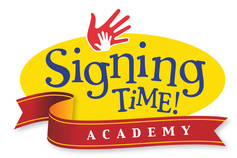 Happy Down Syndrome Awareness Month, day 13! We are celebrating by posting information about Down syndrome each day in October.during the 31 for 21 challenge. Feel free to share these posts to help spread awareness and acceptance. . Speech is an area where most individuals with Down syndrome will have some struggles or delays. The range for children with Ds to say their first word is 1-4 years (typical range 1-3). The range for children with Ds saying two-word phrases is 2-7.5 years (typical range 15-32 months). What is so very interesting is that receptive language for children with Ds is much higher than their expressive language. In other words, our kids understand much more than they can express. This continues on as they get older too. That is why it’s so important for individuals with Down syndrome to have a way to express what they want to say. Think how frustrating it would be for you if you wanted to say something but didn’t have the words to do so. Children with Ds should be evaluated and start receiving speech therapy at least by 2 years old. Sign language is a wonderful way to help children with Ds communicate before they have developed the muscle tone and motor planning for speech. Since people with Down syndrome tend to be visual learners, Sign language is a more native language for them, than speech is. Teaching Sign combined with speech is called total communication and can help children speak sooner, and help develop receptive language skills. Signing Time is a great product designed to teach sign language to hearing children and can speed up the learning process. As children gain more speech they tend to drop signing. Down syndrome advocate and reading specialist Natalie Hale said, "Giving your child a way to communicate with the world around them is the most important thing you can give them, besides love". Just recently the University of Kansas in collaboration with the Vanderbilt University Kennedy Center for Research on Human Development found that children with Ds who undergo daily, instead of weekly, speech therapy sessions have larger spoken vocabularies. This study was the first to explain why increasing the frequency of speech therapy can improve speech acquisition in children with Ds. (The IDDRC Reporter: Frontiers in Down Syndrome Research) Happy Down Syndrome Awareness Month, day 12! We are celebrating by posting a fact about Down syndrome each day in October.during the 31 for 21 challenge. Feel free to share these facts to help spread awareness and acceptance. 31 for 21, Day 12
DS-Connect® is the national Down syndrome registry. Their flyer can be accessed here. It is important for families to make sure their loved one with Down syndrome is registered on this list. The site is run by the federal government, and having accurate statistic and health history information on file about people with Down syndrome can help medical professionals and researchers, connect families with clinical trials and more. One of the most shocking things I learned at the National Down Syndrome Congress convention this summer is that less than 40 families in the state of Nebraska have registered their loved one with Down syndrome on this registry. Now, I have to admit, the registration process takes a little time, and passwords have to be updated every 10 months due to government security regulations, but it is so important that you do so. , How can we expect the Down syndrome population to be represented by government when they are making policies, if they don’t have accurate information about our community members? You can do your part. Advocate for your loved one with Down syndrome. We can do way better than 40. Register on the DS-Connect® website. Happy Down Syndrome Awareness Month, day 11! We are celebrating by posting information about Down syndrome each day in October.during the 31 for 21 challenge. Feel free to share these posts to help spread awareness and acceptance.
Let's face it. Down syndrome is a visible condition. It is not a disease, it can not be caught. It is something people are born with. However, due to some similar characteristics, it is fairly easy to identify a person who has a third copy of their 21st chromosome or Trisomy 21. Unfortunately, becuase the condition is easily identifiable, when some people see a person with Down syndrome, they make assumtions about the person's abilities based on their looks. Most often people with Down syndrome are underestimated or are thought to be sickly due to the fact that someone has identifited they have and extra chromosome. The reality is, individuals with Ds can have a wide array of health problems, or they can be quite healthy. Having an extra chromomsome, can make some things harder for a person to do, but it does not mean they can't do these things. As with any condition, the will of the individual will determine the degree in which they pursue their dreams. Some will work tirelessly to reach an important goal, while others will be perfectly happy taking an easier path. The point to remember is that individuals with Down syndrome are not simply a diagnosis. They are so much more than their extra chromosome. Happy Down Syndrome Awareness Month, day 10! We are celebrating by posting a fact about Down syndrome each day in October.during the 31 for 21 challenge. Feel free to share these facts to help spread awareness and acceptance. #31for21Day 10 Visual Learning. Many of you might know that individuals with Down syndrome tend to be visual learners. Most people think that this means they learn better when materials are presented visually or they are shown how to do things. While this may be true, there is a reason for this. People with Down syndrome have photographic memories. They also tend to think in photos and movies. Moving information to long term memory can happen so much faster for individuals with Down syndrome when information is presented to them in a format that is easy for them to absorb. So what are you doing to make sure the information in the world around them is presented in the way that is most easy for them to take in? Are there any changes to what you are doing now that might help? Try a visual schedule, visual notes and other visual supports. You just might be amazed at how much faster a visual learner will pick up new concepts. |
AuthorDown Syndrome Advocates in Action Nebraska, is a group for parents run by parents.
|
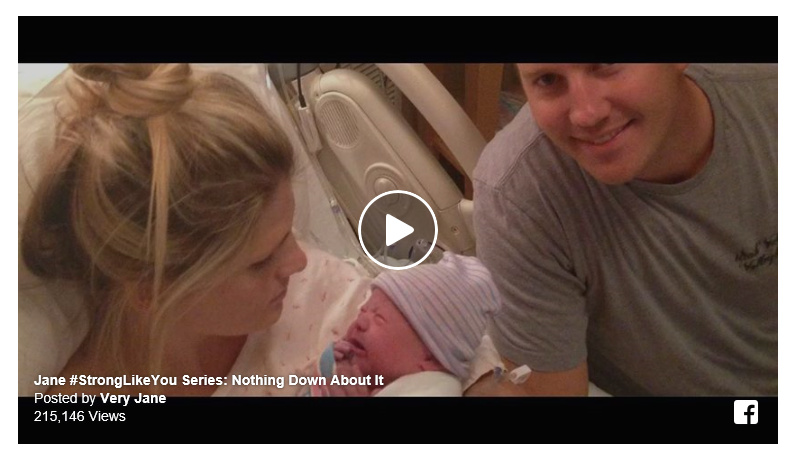

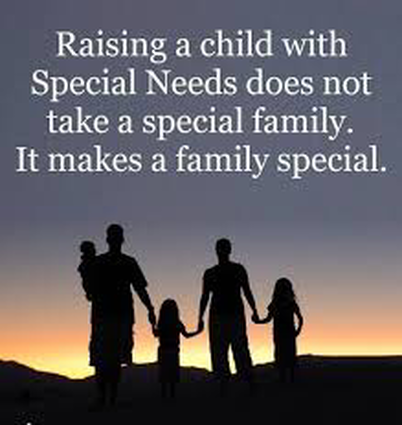
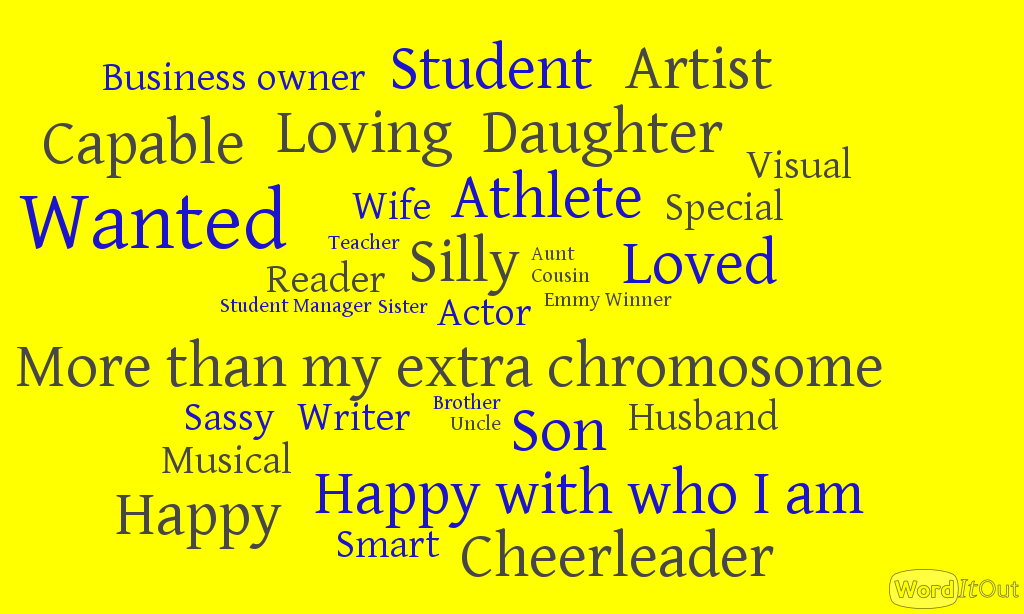
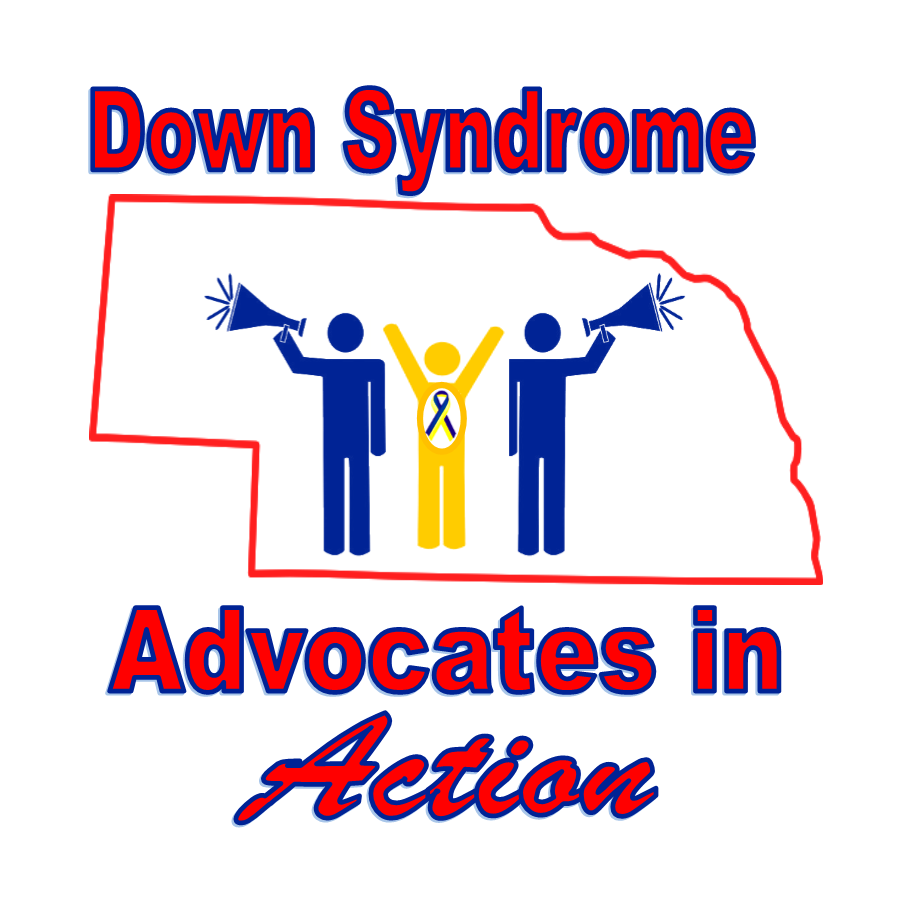
 RSS Feed
RSS Feed